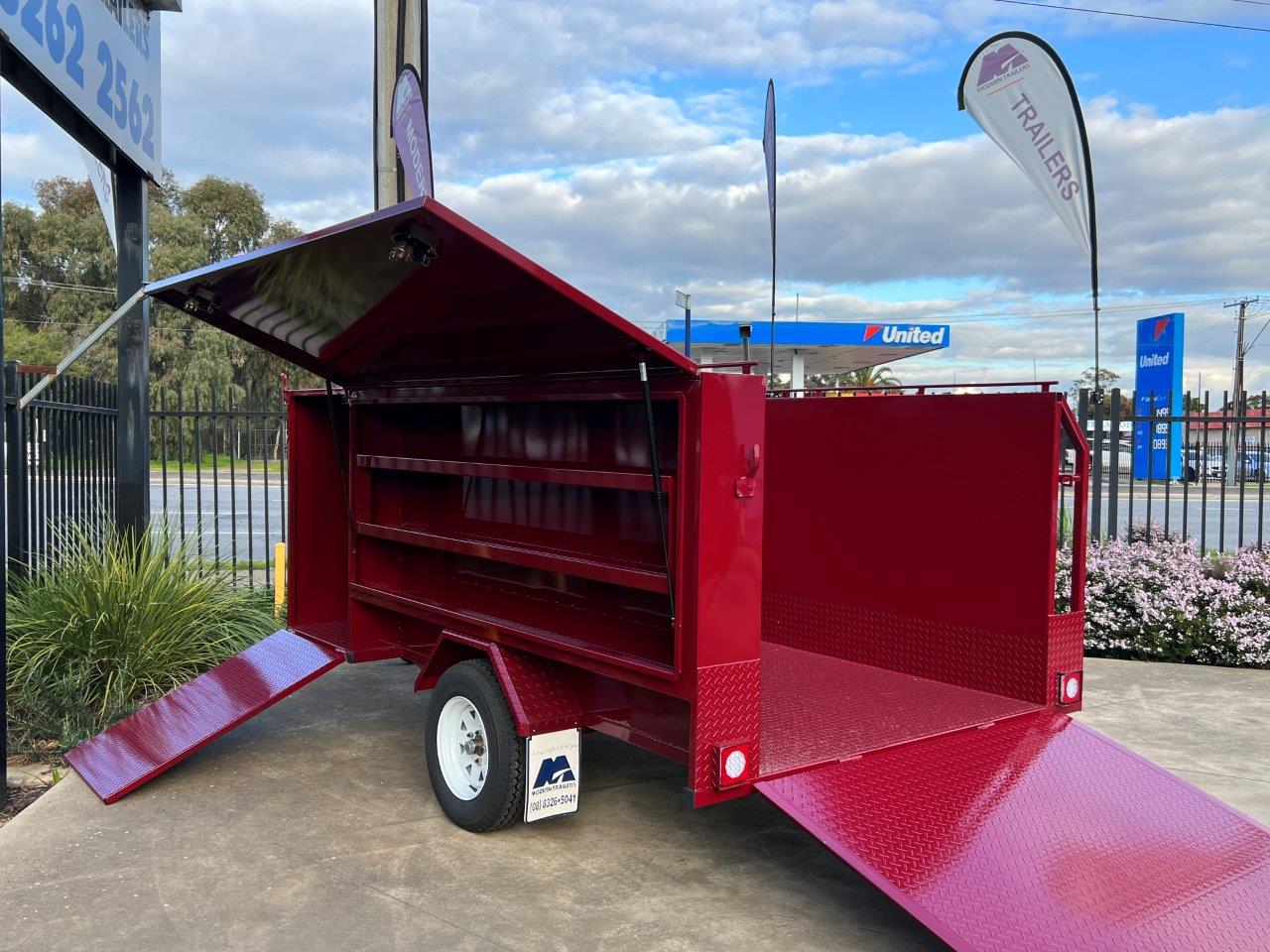Choosing a ride-on mower trailer might seem simple, but it involves more than just picking one that looks good. The right trailer should match your mower’s size, be easy to load, and withstand regular use. Many buyers overlook key features, such as axle type, floor grip, and loading support, which can make everyday use more complicated than it needs to be. This post outlines the key considerations to keep in mind before making a decision, helping you save time, money, and effort.
Start With the Size and Capacity
Size is the first thing to consider when purchasing a trailer. A ride-on mower trailer needs to match the mower’s size and weight. Too small, and it becomes unstable or difficult to load. Too large, and it might become harder to tow or park. Most trailers list their load capacity (also known as payload) and internal deck dimensions. Measure the mower’s width and length first, then allow extra space for movement and tie-downs. Weight is equally important. If the mower is heavy, check the trailer’s Aggregate Trailer Mass (ATM). It’s also worth looking at the tare weight, which is the trailer’s empty weight. Subtracting tare from the ATM shows how much the trailer can safely carry.
Choose the Right Axle Setup
Single-axle trailers are lighter and cost less. They’re ideal for smaller mowers and jobs closer to home. Tandem axle trailers handle more weight and ride smoother, especially on uneven roads. They’re better for bigger mowers or commercial use. When comparing the two, consider how often the trailer will be moved and over what type of surface.
Make Loading and Unloading Easier
Loading ramps make a huge difference. Fold-down or tilt-deck ramps let the mower roll on and off smoothly. Some models have spring-loaded ramps, which reduce effort and improve safety. It’s also helpful to have a low deck height. It maintains a less steep loading angle, reducing the risk of injury during use. Just like a trailer bike rack that secures a bicycle without a struggle, a mower trailer should offer quick and stable loading.
Check the Flooring and Build Quality
The best trailers come with checker-plate steel floors. These surfaces add grip even when wet. Flat timber or plain metal floors can feel slippery, especially during rainy seasons. Also, consider the building materials. Australian-made trailers often use strong, fully welded steel frames. These last longer and perform better under rough use. Compare this to a trailer bike rack, which also relies on strong materials and a sturdy structure. Both need to hold equipment securely, even at high speeds or over bumpy roads.
Look for Useful Features and Tie-Down Points
Look for internal hooks, D-rings, or side rails. These help secure the mower and prevent it from moving during transit. Jockey wheels are useful for support when the trailer is not hitched. Reflective markers and LED lights are essential when the trailer is used in low-light conditions. Storage boxes or tool holders can also be helpful. Just like a trailer bike rack often includes secure straps and lock points, a mower trailer should offer strong tie-down features for peace of mind.
Think About Safety and Brakes
For lighter trailers, mechanical brakes might be enough. But for heavier loads, electric brakes offer better control. Some models also feature breakaway systems that activate brakes if the trailer detaches. This feature adds extra protection on highways or steep roads. Make sure lights and signals are connected correctly. If you are unsure, it’s best to ask the supplier during the purchase or delivery process.
Consider Trailer Use Beyond Mowers
Some people use the same trailer to transport garden tools, fuel cans, or even other equipment. Others may want a removable trailer bike rack added to the rear or side for recreational use. This flexibility makes the trailer more useful and improves its value over time. It’s worth checking if the trailer allows these upgrades or comes with bolt-on add-ons.
Budget and Build: What’s Worth Paying For
Entry-level trailers might work for short-term use or smaller jobs. But for commercial work or regular use, it’s better to invest in quality. Fully welded frames, strong suspension, and sealed lighting all contribute to extending the trailer’s life. Ask about warranties, as some brands offer different coverage for the frame and add-ons. Also, check how easily spare parts can be sourced, like wheels, ramps, or trailer bike rack mounts.
Final Checks Before Buying
A checklist helps make the right decision
- Measure the mower and match it with the internal trailer size
- Check the ATM, tare weight, and load capacity
- Look for ramp type and tie-down features
- Review the braking system and lighting
- Ask about warranty, upgrades, and local servicing
Conclusion
Choosing the right ride-on mower trailer comes down to understanding what fits your equipment, usage, and safety needs. Pay close attention to size, build, ramp design, and how well it secures the mower during transport. If the trailer also supports a trailer bike rack, that’s an added benefit for those needing more from their setup. With the right features in place, moving heavy gear becomes much less of a hassle. Before making a purchase, it’s smart to compare a few models and clarify any doubts with a trusted supplier.
